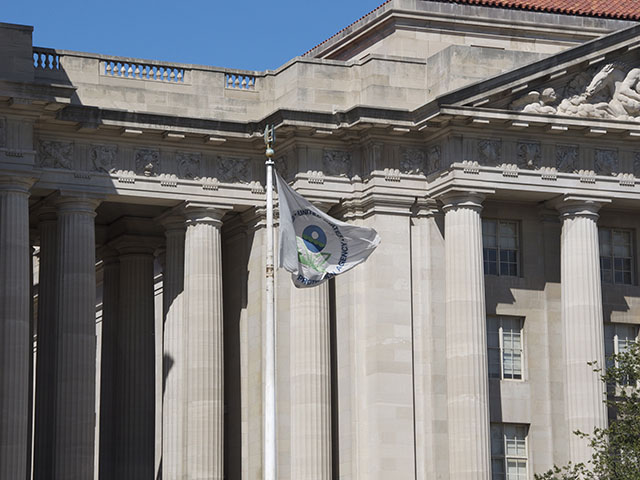RFS Reset, WOTUS on EPA Agenda for 2022
Renewable Fuel Standard Reset Rule Proposal on Track for May 2022
LINCOLN, Neb. (DTN) -- While EPA released a broad-reaching Renewable Fuel Standard proposal last week, the agency is planning to propose an expected reset of the RFS for 2023 and beyond by next spring.
The agency posted its unified agenda on the Office of Management and Budget website, including a number of other issues agriculture interests will be watching.
According to the OMB, the EPA is scheduled to release a notice of proposed rulemaking to set 2023 renewable volume obligations in the RFS for 2023 in May 2022. Right now, the agency has targeted December 2022 for the completion of a final rule.
Last week, EPA released a proposed rulemaking to retroactively set volumes for 2020, as well as proposals to set volumes for 2021 and 2022, https://www.dtnpf.com/….
On Tuesday, Sens. Amy Klobuchar, D-Minn., and Charles Grassley, R-Iowa, introduced legislation to prevent EPA from retroactively reducing biofuels below the minimum required by the Renewable Fuel Standard once volumes are finalized.
The same bill was introduced in the House of Representatives in November by Reps. Ashley Hinson, R-Iowa, Rodney Davis, R-Ill., Angie Craig, D-Minn., and Ron Kind, D-Wis. The Senate bill initially was co-sponsored by Sens. Tammy Duckworth, D-Ill., and Joni Ernst, R-Iowa.
"This bill comes at a critical time," said Geoff Cooper, president and CEO of the Renewable Fuels Association. "Just last week, EPA proposed an unprecedented retroactive reduction to the 2020 renewable volume obligations (RVOs) that were finalized more than two years ago. The RFS was created to provide long-term market certainty for our nation's ethanol producers and farmers."
American Coalition for Ethanol CEO Brian Jennings said in a statement the legislation was needed because of EPA's willingness to retroactively cut volumes.
"In light of last week's proposed retroactive cuts to the 2020 biofuel blending obligations, this bill makes clear that going back in time and revising targets that already self-adjusted not only goes against congressional intent but is likely illegal," Jennings said. "We need EPA to quit playing politics when it comes to administering the program and instead look to it as an important tool to immediately make progress toward decarbonization goals for the transportation sector."
P[L1] D[0x0] M[300x250] OOP[F] ADUNIT[] T[]
According to the unified agenda, the agency plans to finalize the last rule by February. As for the EPA proposal to change deadlines for RFS compliance, https://www.dtnpf.com/…, the unified agenda does not offer an end date for a final rule, although a public hearing was held on Dec. 3.
By sometime in January 2022, the agency plans to release a notice of proposed rulemaking on potential RFS pathways for using canola oil to produce renewable diesel, jet fuel and liquid propane. The targeted date for a final rule is July 2022.
In addition, EPA is expected to finalize a rule this month to revise greenhouse gas emissions standards on vehicles model 2023 and later as well as for light-duty vehicles. During a public comment period that ended on Sept. 27, ethanol industry officials called on the Biden administration to consider high-octane fuels such as ethanol to achieve those GHG reductions.
WOTUS RULEMAKING
EPA expected to issue a notice of proposed rulemaking on a new waters of the U.S., or WOTUS, definition by sometime in February 2022.
In November, the agency issued a proposed rule to return to pre-2015 definitions, https://www.dtnpf.com/…. The public-comment period is expected to close in the middle of January.
The second rulemaking on this front is expected to make additions to the first rule.
"The agencies intend to pursue a second rule defining waters of the United States to consider further revisions to the agencies' first rule, which proposes to restore the regulations in place prior to the 2015 WOTUS rule, updated to be consistent with relevant Supreme Court decisions," the agency said on the OMB website.
"This second rule proposes to include revisions reflecting on additional stakeholder engagement and implementation considerations, scientific developments, and environmental justice values. This effort will also be informed by the experience of implementing the pre-2015 rule, the 2015 Clean Water Rule and the 2020 Navigable Waters Protection Rule."
NAAQ STANDARDS
In the unified agenda, EPA announced its intention to release a proposed rule on the national ambient air quality standard in the Clean Air Act by August 2022. A final rule could come by March 2023.
In 2018, the Trump administration announced intentions to reform the standards. In December 2020, the administration instead left in place the Obama administration change.
In 2015, EPA tightened the ozone standards of particulate matter from 75 parts per billion (ppb) to 70 ppb. That action was of particular concern to farmers and ranchers who already operate in regions of the country that struggle to meet national ambient air quality standards for ozone.
Many of those producers have had to work to reduce dust pollution on their farms as part of plans in place in what are called "non-attainment areas."
Agriculture groups cried foul at the notion the federal government could regulate farm dust -- an idea that became a rallying cry for those who believed the agency was taking an overly zealous regulatory approach.
The standards have been a headache for farmers and ranchers in some regions of the country, particularly in the Southwest.
Todd Neeley can be reached at todd.neeley@dtn.com
Follow him on Twitter @DTNeeley
(c) Copyright 2021 DTN, LLC. All rights reserved.



